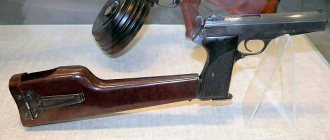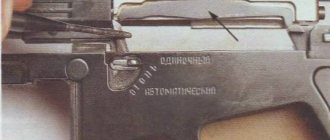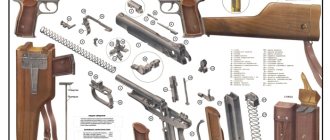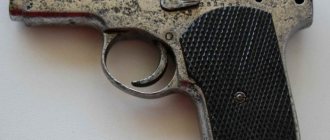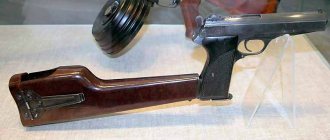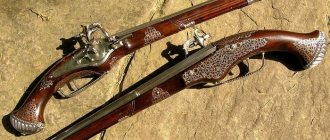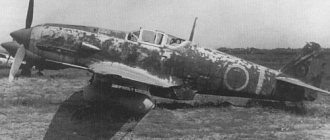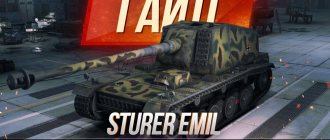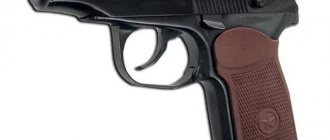Japanese firearms developed in a way different from European and global standards. Perhaps the roots of the differences (in appearance, but not only) lay in the surprising fate for Japan of one of the most famous designers, Keijiro Nambu.
He created a “truly Japanese” unique automatic pistol, named after him. How did the son of a rebellious samurai, adopted by a merchant, become the most talented designer of the Empire of the Rising Sun? How did the first “truly Japanese” pistol “Nambu” become the “Nambu Taisho type 14”, which became famous in the wars with China and conflicts with the USSR? All these puzzling questions deserve detailed consideration.
Japanese weapons theory and practice
The future greatest gunsmith of Japan, Keijiro Nambu, seemingly had bad luck from birth. In any case, he clearly did not “guess” the date and place of birth (1869, in one of the rebellious Japanese principalities ─ Saga). It is likely that his father, a mid-ranking samurai, could have participated in the Boshin War. The heyday of the Meiji era was marked by the relegation of the samurai, as an untitled aristocracy, to the role of ordinary soldiers.
It was into such a samurai family, which did not enjoy the trust of the government and even the Emperor, that Keijiro was born. The father sold the child for adoption to a merchant. But, even having been brought up in the merchant class, the young born samurai did not follow the path of trade, but returned to his father’s path, to the army.
An interesting detail: it seems that being raised by an adoptive father and working as a boy in a trading store instilled in Keijir an aversion to the commercial side of life. In subsequent years, he will invent many technical innovations, but none of them will be able to make them competitive in terms of production profitability.
Keijiro Nambu served so faithfully and devotedly that he quickly received promotions and then an officer rank.
At the age of 28, with the rank of captain, he entered the Arsenal, apprenticed to the designer of the famous Japanese rifle, Nariake Arisake. The future holder of imperial awards found his calling.
Quite surprisingly for the Meiji era, which preferred to creatively rework Western models of guns and ships, the development of small arms in the Land of the Rising Sun took an unusual path. Largely thanks to Keijiro Nambu.
This talented gunsmith managed to work on the famous Arisaka rifle and Type-26 revolver, which ended up in the Russo-Japanese War. Subsequently, already in the “Taisho era”, Keijiro Nambu was working on the first Japanese submachine gun “type 11” and on self-loading (automatic) pistols, the famous “Nambu type 14”, the active use of which began only during the Sino-Japanese and World War II. war.
History of creation
The first prototype of the “samurai” pistol that later became famous was created by the designer back in 1902. However, difficulties arose with the cartridge used; the War Ministry required either a weapon chambered for 7 mm or 8 mm.
Due to long disputes in the ministry about ammunition for these automatic weapons, both the Russo-Japanese War and the First World War ended.
But the pistol was never adopted for service for two reasons:
- it was quite expensive to produce;
- The Ministry of War decided that an 8 or 7 mm cartridge would be more effective.
In the end, after twenty years of disputes (not only in Russia there is a strong bureaucracy!) The supporters of the eight-millimeter cartridge won, and as a result, the prototype “Nambu A” or “type 4”, created in 1914 and again not put into production, began to be mass produced in Japanese factories only after 1925.
The long “path to the masses” allowed the designer to eliminate many of the childhood illnesses of his brainchild and by 1925 create an ideal (from the designer’s point of view) version of personal officer weapons: “Nambu type 14” model 1925. Or, in honor of the Emperor and the “era” ─ “Nambu Taisho 14”.
Over these many years of improving the pistol, the designer added to the original 1914 version:
- safety pin on the receiver (left);
- enlarged trigger guard;
- second return spring - now instead of one, two springs were placed on the sides of the receiver;
- improvement of the sight (a rear sight was added directly to the receiver).
To simplify production, the designer abandoned the automatic fuse. Outwardly resembling a cross between the most successful automatic pistols of the First World War, the Luger P-08 (in appearance) and the Mauser S-96 (in the bolt action design), the Nambu Taisho 14 was put into mass production at two factories at once.
Already by 1927, the pistol was recommended to officers by the ministry (at that time in Japan, officers purchased personal weapons with their own money).
Type A
Original "grandfather" Type A
The original Nambus was the Type A, designed by General Kijero Nambu in 1902. The Type A had two main variants with the first group of Nambuses produced between 1903-06, distinct from those produced after 1906. Among collectors, the original Nambus is usually referred to as the grandfather of the Nambus. The grandfather Type A was not produced until approximately serial number 2400. Both Tokyo Arsenal and Tokyo Gas and Electric Company ceased production of the Nambu Type A in 1923. The Nambu Type A superficially resembles the Luger P08 pistol, but is functionally more similar to the Mauser C96.
The granddaddy of the Type A Nambus are several deviations from the later Type A Modified. The Modified Type, usually referred to as the Papa Namba, were produced at Tokyo Arsenal up to the range serial number 7000. The trigger from the Grandfather A Type A Namba was considered extremely tight especially when wearing gloves and was enlarged in later models. The Grandfather Nambus also had a wooden bottom magazine and welded lanyard loops. The Nambus dad had an aluminum magazine bottom with LANYARD loops undistributed in the rings. Both grandpa and daddy Nambus types may have had the Siamese JUK symbol stamped on the handle indicating the rear service in pre-World War II Thailand.
Design features and performance characteristics
The Nambu 14 pistol that finally went into service with the troops (before the partial modernization of the trigger guard and a shorter firing pin after testing in the battles at Khalkhin Gol and Manchuria in 1940) looked like this:
- length ─ 229 mm;
- height – 153 mm;
- barrel length ─ 114mm;
- weight ─ 870 g. for the first model and 960 grams for the “type-14”;
- caliber – 8 mm;
- magazine ─ 8 rounds (to reduce the overall weight of the weapon after 1940, it was made partly from aluminum);
- initial bullet speed ─ 280-290 m/s;
- initial energy ─ from 260 to 320 kJ.
The weapon was quite heavy, and the 8-mm Japanese cartridge, as noted already during the fighting, remained unfinished: due to the desire to use both modern and black powder, the bullet (6 grams in weight) was poorly bonded to the cartridge case, which led to to the increased sensitivity of ammunition to weather and storage conditions. However, the large (relative to its size) weight gave the pistol the advantage of soft and weak recoil.
Also, the advantages of this Japanese pistol include good accuracy and aiming of fire, due to the low location of the barrel axis.
Germany
The Germans, as you know, during the Second World War, in terms of short-barreled weapons, proved themselves to be quite fleabags. In addition to the famous P08 "Luger" (aka "Parabellum"), they were armed with the "Walter" P38, as well as a collection taken from the occupied countries and from the allies - from the Polish "Vis" and the Spanish "stars" (Star) to "High Power" in the Belgian version.
German officer with P08 pistol
Both original “Germans” - P08 and P38 - had magazines for eight rounds of 9x19 mm cartridges. The younger P38 received a double-action trigger mechanism, but people still loved and appreciated the old Parabellum more: it was believed that it was of higher quality, and it was better to hit. However, even during the tests the old Luger showed itself to be invigorating. Only he did not tolerate the frost well, but this is understandable - age. True, the P38 also did not “appear” to Soviet testers. When frozen, he shut up a little less often than the Luger, but he was even more afraid of dust and dirt.
Features of the pistol's performance characteristics
Nambu Taisho 14 has a number of technological and design features. In particular, it lacks a bolt casing, and the weapon thus consists of the following parts:
- barrel and receiver, rigidly attached to each other with two return springs on the sides;
- pistol grip trigger;
- bolt with locking latch and one return spring directly inside the table box.
Among other features, it should be noted the absence of a bolt stop, which is why after firing, when the magazine was removed, the bolt immediately closed.
Recommendations
- Derby, Harry L.; Brown, James D. (2003). Japanese Military Cartridge Pistols 1893-1945
. Atglen, Philadelphia: Schiffer Publishing. ISBN 0-7643-1780-6. - Hogg, Ian; Weeks, John (2000). Military Small Arms of the 20th Century
(seventh ed.). Iola, WI: Krause Publications. ISBN 0-87341-824-7. - Hogg, Ian; Walter, John (2004). Pistols of the world
(4th ed.). Iola, WI: Krause Publications. ISBN 0-87349-460-1. - Kinard, Jeff (2003). Pistols: An Illustrated History of Their Influence
. Santa Barbara, CA: ABC-CLIO. ISBN 1-85109-470-9. - Miller, David (2010). Fight Men Uniform War II Axis World Forces, Equipment and Weapons
. NY:. Chartwell Book INC ISBN 978-0-7858-2815-0. - Skennerton, Ian (2008). Japanese Pistols service
. Labrador, Queensland: Arms and Militaria Press. ISBN 978-0-949749-88-8.
Disadvantages of weapons
The main disadvantages of the weapon, despite all the work Keijiro Nambu has done to improve the manufacturability of his pistol, are, first of all, the high cost of production. Due to three (!), in particular, return springs and the general original concept, in production the Nambu Type 14 was almost one and a half times more expensive than the Colt M1911, and in retail the difference in price in favor of the Browning pistol was , neither more nor less, one month's salary (about 75 yen) of Japanese junior officers.
It is unknown whether the designer himself could have influenced this shortcoming, but the 8-mm 8x22 cartridge, having a good stopping effect, was already obsolete by the time of World War II. The short sighting range and frequent misfires added to the problems. And to complete the picture, it is also impossible to use captured or “foreign” ammunition, which was often practiced on the fronts of Europe. The Japanese did not switch to the 9x19 cartridge due to their adherence to patriotic traditions (as historians believe).
"Nambu type 14" in comparison with other pistols of the Second World War
An interesting table compares the performance characteristics of the Nambu Taisho with the best pistols of World War II. Willingly or unwittingly, the designer tried to make something between the Soviet TT and the Luger pistol. This can be seen from the table.
But it is also noticeable that the weight of the Japanese pistol is clearly greater, and the bullet speed (only 8 mm!) is lower than that of its world analogues.
This speed would be suitable for the famous 0.45 Colt cartridges (11.43x23 mm) and not for the eight-millimeter Japanese cartridge.
| Name | A country | Weight, kg. | Total length, mm | Barrel length, mm | Initial bullet speed, m/s. | Magazine capacity | Caliber, mm |
| Colt M1911/M1911A1 | USA | 1, 36 | 219 | 128 | 252 | 7 | 11, 43 |
| TT-33 ("Tula Tokarev") | USSR | 0, 83 | 196 | 116 | 420 | 8 | 7, 62 |
| BrowningHigh-Power | Belgium, Canada, Britain | 1, 01 | 196 | 112 | 354 | 13 | 9 (“Browning” or “Parabellum”) |
| Walter PP | Germany | 0, 682 | 173 | 99 | 290 | 8 | 9 (“short”), 7. 65, 6, 35 |
| "Nambu type 14" | Japan | 0, 96 | 299 | 114 | 290 | 8 | 8 ("nambu") |
| Walter PPK | Germany | 0, 568 | 155 | 86 | 280 | 7 | 7, 65 6, 35 |
| Luger P08 | Germany | 0, 876 | 217/235 | 102/120 | 350/380 | 8 | 9("parabellum") |
Today, the Nambu Taisho Type 14 is of great interest to collectors and military historians precisely because of a number of extraordinary design solutions and the relative rarity of this pistol in good condition on the exotic military antiques market. And at the beginning of his career, in the battles of 1937-1941, the barrel showed itself well.
Legacy[edit]
In 1949, William B. Ruger used elements of the Nambu design in his own design, which became the Ruger Standard. It was the first weapon developed by Sturm, Ruger & Co. The Ruger Standard has become the most successful .22LR pistol ever produced,[28][29] and as of 2016, Ruger has produced more firearms than any other American company and is worth over $600 million. [thirty]
Due to their rarity and historical significance, Nambu pistols became popular among gun collectors, with models selling for between $800 [31] and $1,500. [32]
Combat use
Despite a number of technological shortcomings, the Japanese “Type 14” very quickly became one of the main types of officer weapons of the Imperial Japanese Army. In any case, in photos from the Sino-Japanese War of 1937-1945, a pistol can be seen on the belt or in the hands of officers more often than the notorious katana.
It was with this pistol that Japanese officers led soldiers in successful assaults on Beijing, Shanghai, and crossed the Yangtze during the capture of Wuhan (Hankou).
Like other pistols of the fierce world massacre, the “hero” of this article did not escape dubious fame. If “Walter PP” and “Browning” were used during the Katyn executions, then the “Nambu Type 14” was used to finish off numerous victims of the Nanking Massacre.
According to a number of websites, in battles outside urban areas, the Japanese were more willing to use captured Mausers or the weapons of their then allies (before 1941) - Colts and Brownings, due to their greater range.
It is curious that when, as the war turned into a global conflict, the allies changed, Browning High Power pistols were actively produced in Canada for the Kuomintang troops and were already valued by the Japanese as profitable trophies.
However, in the famous photographs of 1942, depicting the surrender of British officers after the fall of Singapore, it is the Nambu Type 14 that can be seen in the hands and on the belts of the imperial officers. The Enfield and Webley revolvers of the British as trophies were of little interest to the Japanese.
An interesting fact: the widely publicized surrender of Lieutenant Hiroo Onoda, who continued to defend the honor of the Japanese army with weapons in his hands until 1974, was not without a Nambu pistol ─ in a solemn ceremony Onoda surrendered his Arisaka-99 rifle and a katana. And later, showing Major Taniguchi his arsenal, he demonstrated, among the captured weapons, the personal pistol with which he started the war: in good condition, but without communication with the Metropolis, it was simply impossible to get cartridges for it.
There is a legend that it was the “Nambu type 14” that was the pride of Marshal Blucher’s collection.
Also, already during the Second World War, the Nambu Type 94 was hastily put into production. However, this precocious “successor” turned out to be the most unsuccessful pistol of that era due to its high cost and, at the same time, low quality (due to the peculiarities of wartime production).
So, there is a completely reliable legend that the “type 94” often fired... without pressing the trigger! ─ Because of the extremely poorly placed sear: on the left side of the table box, not covered by anything. ─ As soon as you inadvertently put pressure on him, a shot would fire. So it is the Nambu Taisho Type 14, with all its shortcomings, that remains the best original Japanese pistol of 30-45.
holster
Type 94 pistol holsters were typically made from either pigskin or genuine leather and ranged in color from light to dark red brown. The holsters faced the same deterioration in quality as the Type 94 pistol. As leather supplies were depleted in Japan, holsters produced in 1944 became made from olive fabrics. The Type 94 pistol holster differs from other Japanese holsters by having a pointed closing flap and a vertically positioned magazine pouch. The tourniquet bag has a narrow extension to accommodate a cleaning rod. Most holsters were made in civilian owned tanneries with some ink stamped with arsenal and inspection stamps. A belt loop and two "D" shoulder ring straps are provided on the back of the holster and are made of brass, galvanized steel, or nickel plating.
